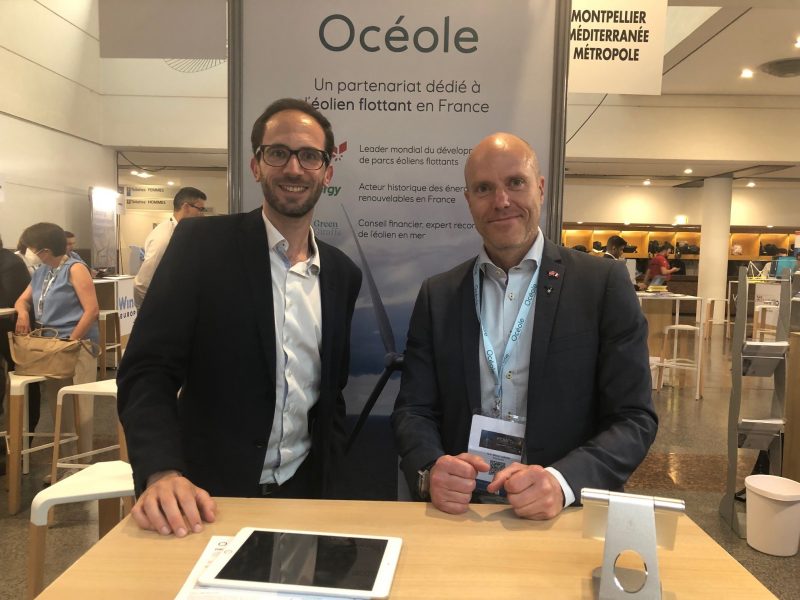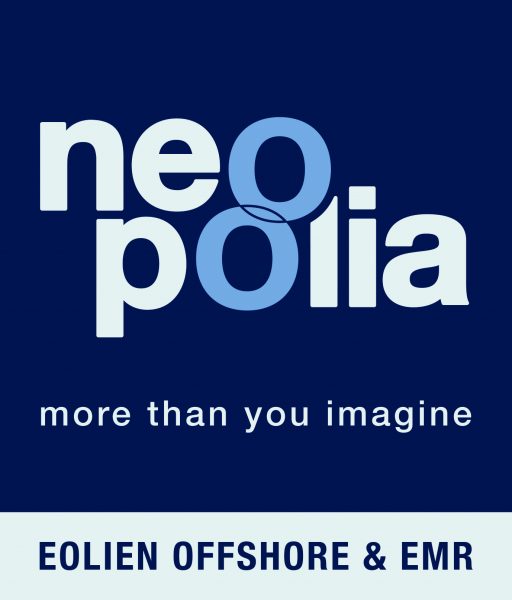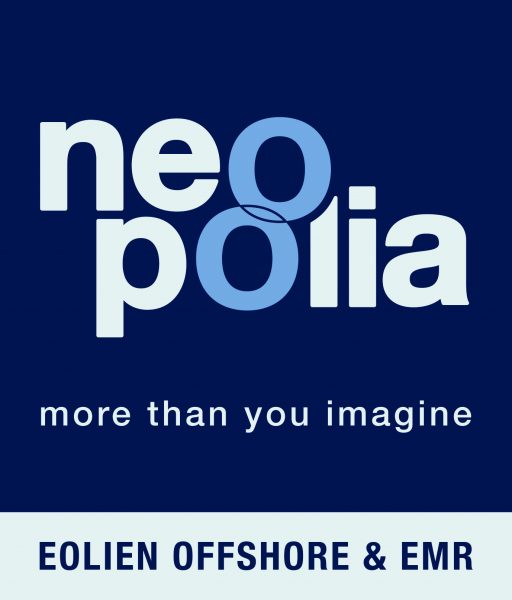The Triskéol project has been short-listed in the AO5 Sud Bretagne tendering procedure. It brings together three major players in the offshore wind sector: wpd, a European company operating wind projects on- and offshore as well as solar projects; Vattenfall, a producer, distributor and supplier of power in Europe; and BlueFloat Energy, global specialists in floating wind and based in Spain. wpd technical manager, Pierre Warlop, explains how they succeeded in the bid and he shares insights about the challenges ahead for floating wind.
Tell us about your consortium?
We are three companies with complementary skills and expertise. This gives us a unique background in floating wind.
wpd works in 30 countries around the world and is a pioneer in floating wind. It has been operating in France since 2007. We built Germany’s first wind farm (Baltic 1) and we’ve been active in growing France’s wind sector. In this respect we participate in various projects including the Fécamp and Calvados farms for which we are co-developers. We operate in different markets, including in Asia where we’ve been working on the Yunlin offshore development. This allows us to export Europe’s expertise in floating wind and promote its capabilities. We entered the floating wind sector in 2009 and continue to work on large-scale offshore projects in Asia, Europe and the United States.
For the call for tenders, we asked Vattenfall to join us as they share the same values and bring in complementary skills to the table. They’ve worked with us since 2004 and are considered one of the world’s leaders in offshore wind. Vattenfall is 100% owned by the Swedish state and is well known in France for supplying gas and electricity to homes and businesses, which it has been doing for over 20 years now. They’re looking to increase production capacity and to apply their expertise to offshore wind. With 12 wind farms in operation and over 5GW under development, Vattenfall is one of the largest operators in the sector. It also was the first to completely decommission a wind farm, which has given it valuable experience in lifecycle management.
BlueFloat Energy offers significant capability in floating wind despite its young age. Its expert staff have been involved in some 60% of projects undertaken to date. They work across the globe – solely in floating wind – in France, Spain, Italy, the UK, Australia, Colombia, Taiwan and New Zealand.
How do you stand apart from the other short-listed bidders?
We have three key strengths: close ties with local communities, a global outlook and an ability to innovate.
Over the years and during offshore wind projects in France, we’ve been able to develop close ties with local communities in Western France. And we’ve been partners with the Neopolia cluster for almost fifteen years!
Our global outlook draws on our project portfolio: 15 wind farms in operation, 5 under development including Fécamp and Calvados in Normandy, over 22GW under development with half involving floating wind. In addition, there’s 3.5GW at Scotwind that Vattenfall and BlueFloat Energy have just been selected for.
And our ability to innovate can be seen through various projects and initiatives we’re leading. For example, the development of offshore hydrogen processes (hydrogen turbine 1 pilot at EOWDC) and alternative propulsion crew transfer vessels.
For you, what is the main challenge facing the construction of the first commercial float wind farm?
We have to look at industrialisation and set out a realistic, forward-looking vision of the technology involved as the market grows in Europe. If the project is to be completed by the end of the decade, then we need to anticipate manufacturing capacity and future solutions. This means drawing on previous experience in offshore wind and using the insights from the demonstrators. In this way, we will be able to better design the turbines, foundations, anchoring, and also to improve installation methods with better logistics. Another key aspect is to look at upgrading infrastructure and port facilities to cater for the fabrication and assembly of larger components such as floaters, and this will also require more land.
What are the strengths and weakness of France’s offshore wind sector in your opinion?
We have a strong background in floating wind thanks to pilot farms and the Sem-Rev test site, and also thanks to the existing research scene. This will really put us in good stead to test and validate innovations and it will give France an international showcase.
Local research labs, training organisations and design offices can get deeply involved in the new projects going ahead and they can apply their globally recognised skills and expertise.
Another strength is France’s wind turbine manufacturing capacity, which represents a third of total capacity in Europe. As wind turbine manufacturing only represents between 35 and 45% of the total project budget, there are opportunities for French businesses in foundation fabrication, pre-assembly, installation offshore, electric substations, subsea cabling and grid connections.
Weaknesses include the lack of specialist offshore facilities and equipment such as the jack-up vessels used for fixed-bottom turbines. This is, to some extent, offset by the fact that the method for installing floating turbines is more flexible and can rely on more conventional fleets that are available here in France.
There is also a lack of means for mass-producing metallic foundations even though existing equipment can cater for the floating wind market at this early stage.
What is your strategy for ensuring local communities benefit economically from the project?
We continue to do what we’ve been doing for the last ten years: we engage with businesses upfront and inform them about emerging needs.
With our consortium’s combined experience, we can easily identify those building blocks in the value chain that offer add-value and that can be located in France. Today, we know how to find qualified French businesses. We also know the subcontractor network and can promote this to tier 1 suppliers, which we have already done in various projects.
An example of this is the Seafox vessel built by Navalu: it was chartered to work on one of our farms in Germany. There, it was able to demonstrate its capabilities and go on to be used at other farms in the North Sea. So our strategy is about helping businesses secure contracts and introducing them to our partners via our portfolio of projects in France and elsewhere.
Skills training also comes into our strategy. When new projects come along, new skills may need to be available to deal with the wide range of technologies in floating wind. That’s why we issued a call for expressions of interest two years ago with Pôle Mer, Weamec, France Energie Marine and Bretagne Ocean Power. What we want to do is show the business and academic communities what the sector’s current and future challenges are. In this way, home-grown and high-value solutions can be put together for the medium and long term.
What expectations do you have of the local manufacturers and institutions?
Expectations are set out in a charter for local content that allows everyone to get a basic idea of the objectives. If the sector is to grow and prosper, then communities need to align local business and industry with the right needs. Communities and regions also need to work closely together to ensure the right skills are available. Another important step is to build a consolidated vision of Western France’s industrial fabric and of what it can offer. Current projects and those in the pipeline are clearly aligned with this. We work on a national level and also across Western France’s coastal areas. Clusters work together alongside public authorities and it falls upon us to make this cooperation a success. To do this, we need to properly support stakeholders. We need a joined-up approach to subcontracting so that the sector can grow and compete while communities can benefit. Failing which, projects won’t find the support and acceptance they need. We continue our long-standing efforts with the clusters as part of projects and other developments.
Tell us how you work with Solutions&Co?
In Pays de la Loire, an innovation scheme, now finished, allowed us to work more effectively on streamlining logistics. And we have been constantly in touch with Solutions&Co to work on planning and organising the sector as a whole. The French government has set out an objective to reach 40GW by 2050 and now we have to find the smartest way of organising the sector in the medium to long term so that it delivers on this. The AO5 call isn’t a one-off; it forms part of a broader context of energy and spatial planning. It needs to have an investment strategy for the sector’s industrialisation, especially for port facilities in Western France but also nationally. This cooperation must continue and allow communities to see ahead in good time so that they can make informed decisions.


